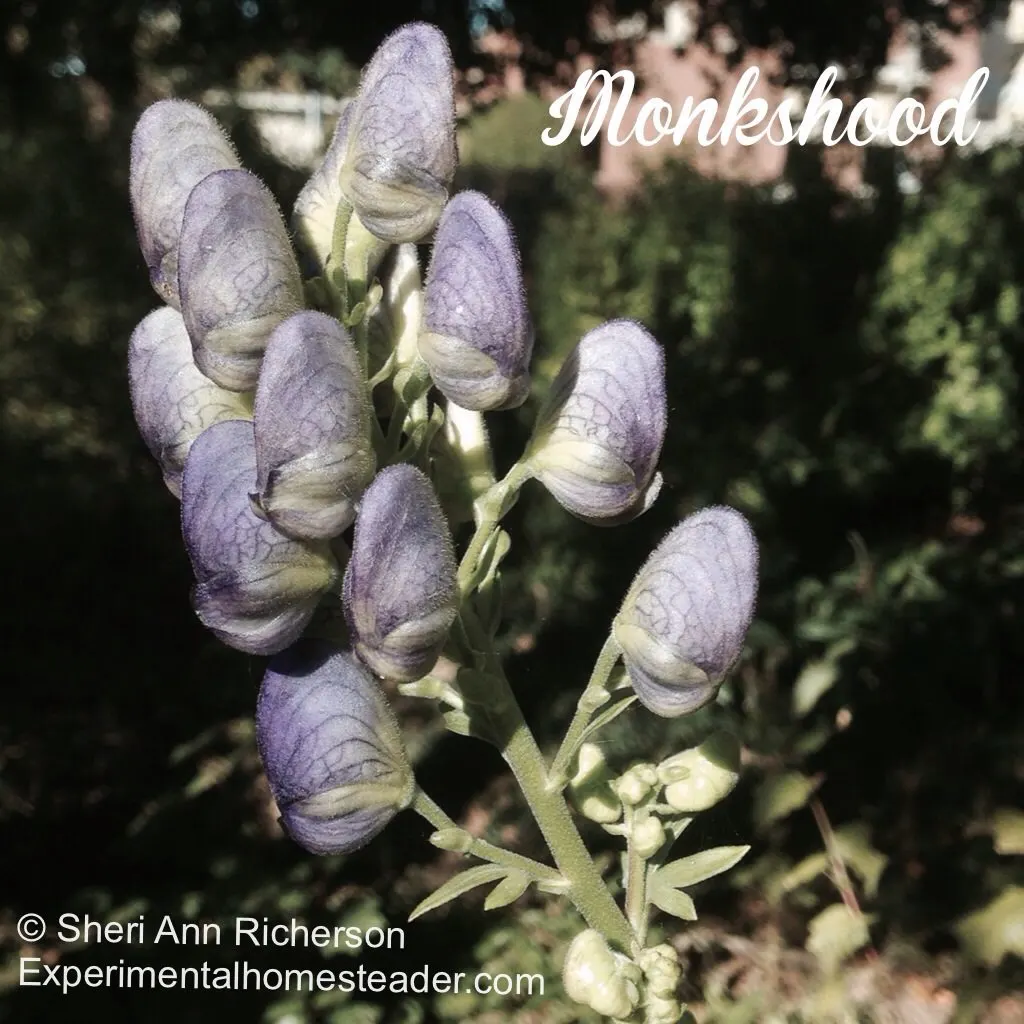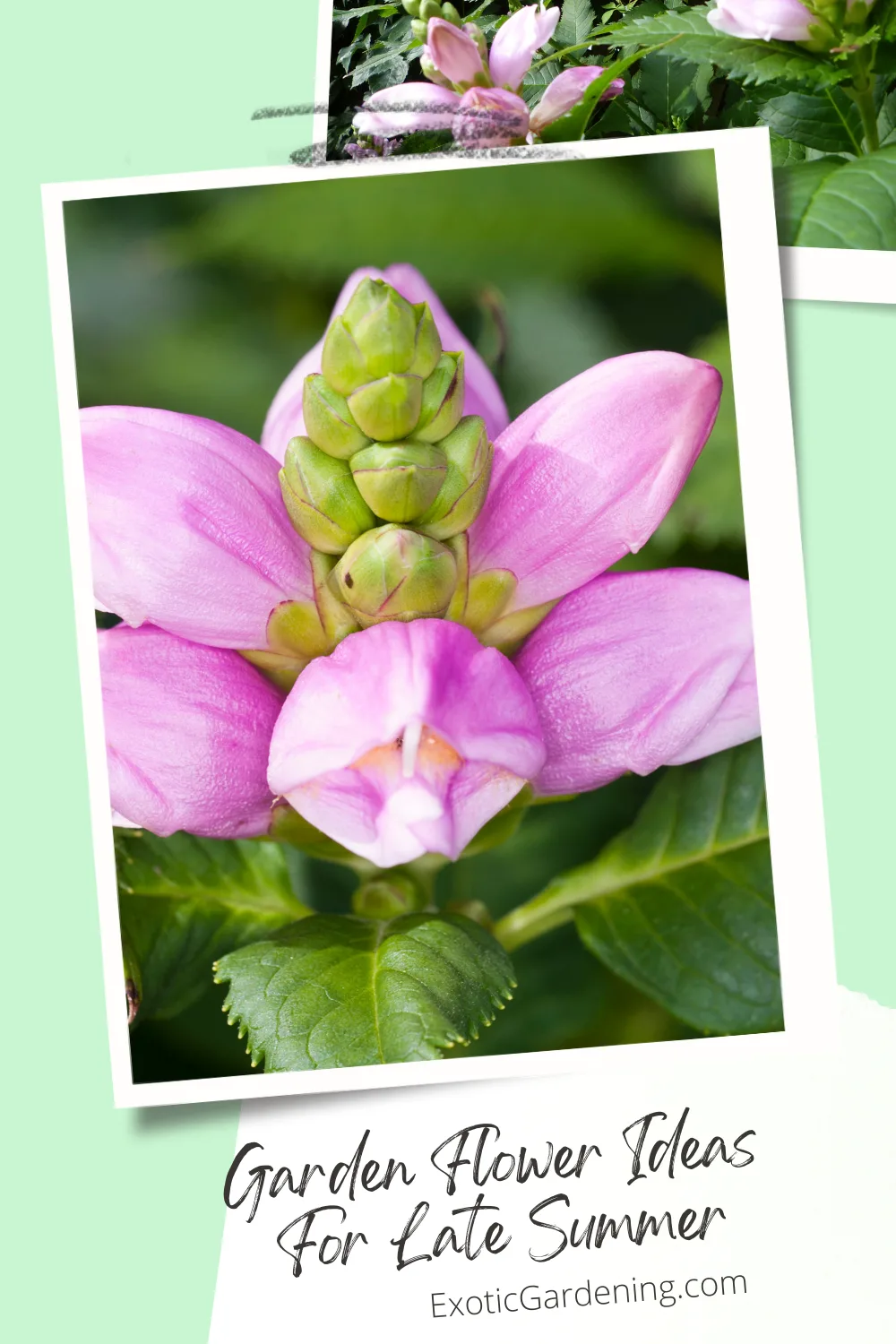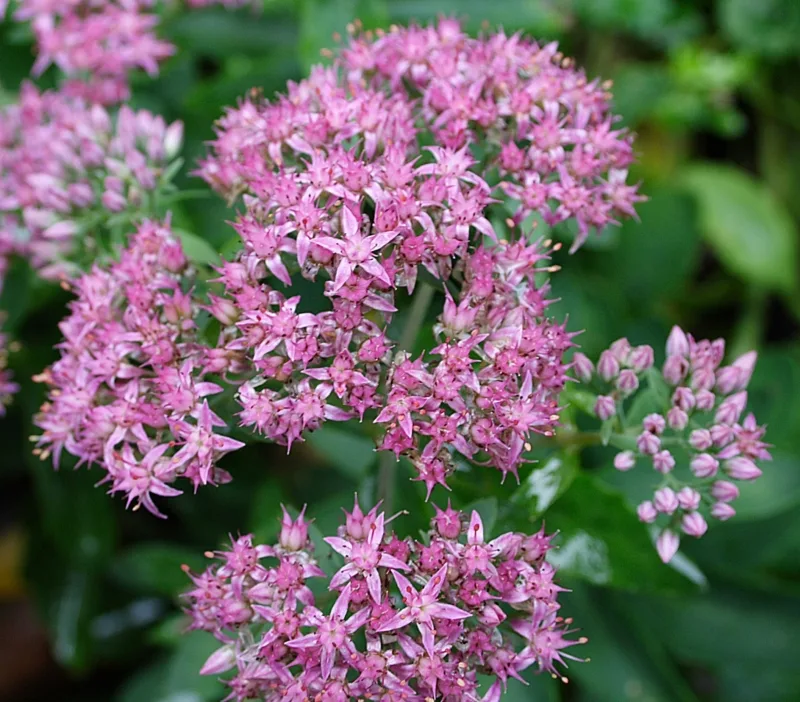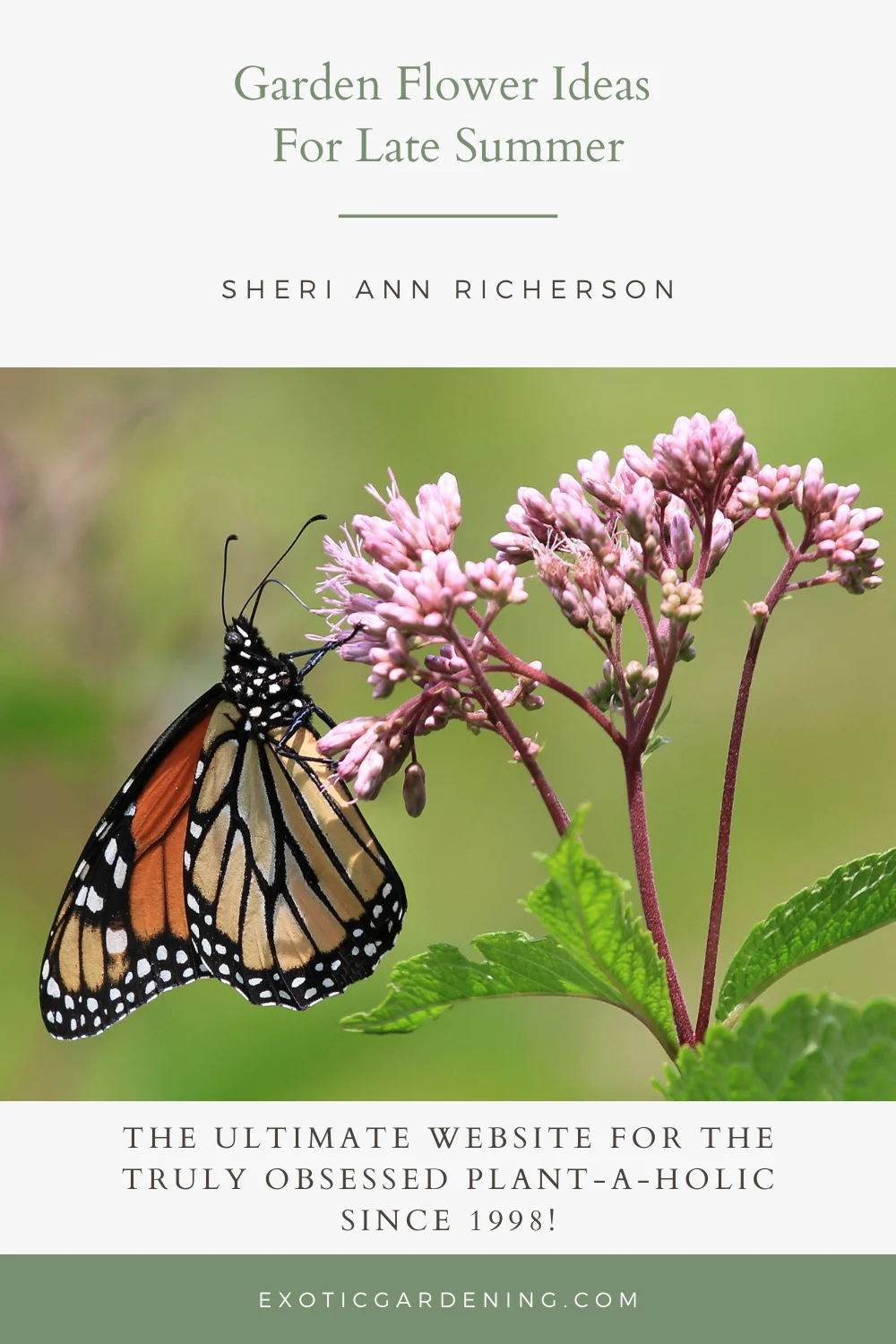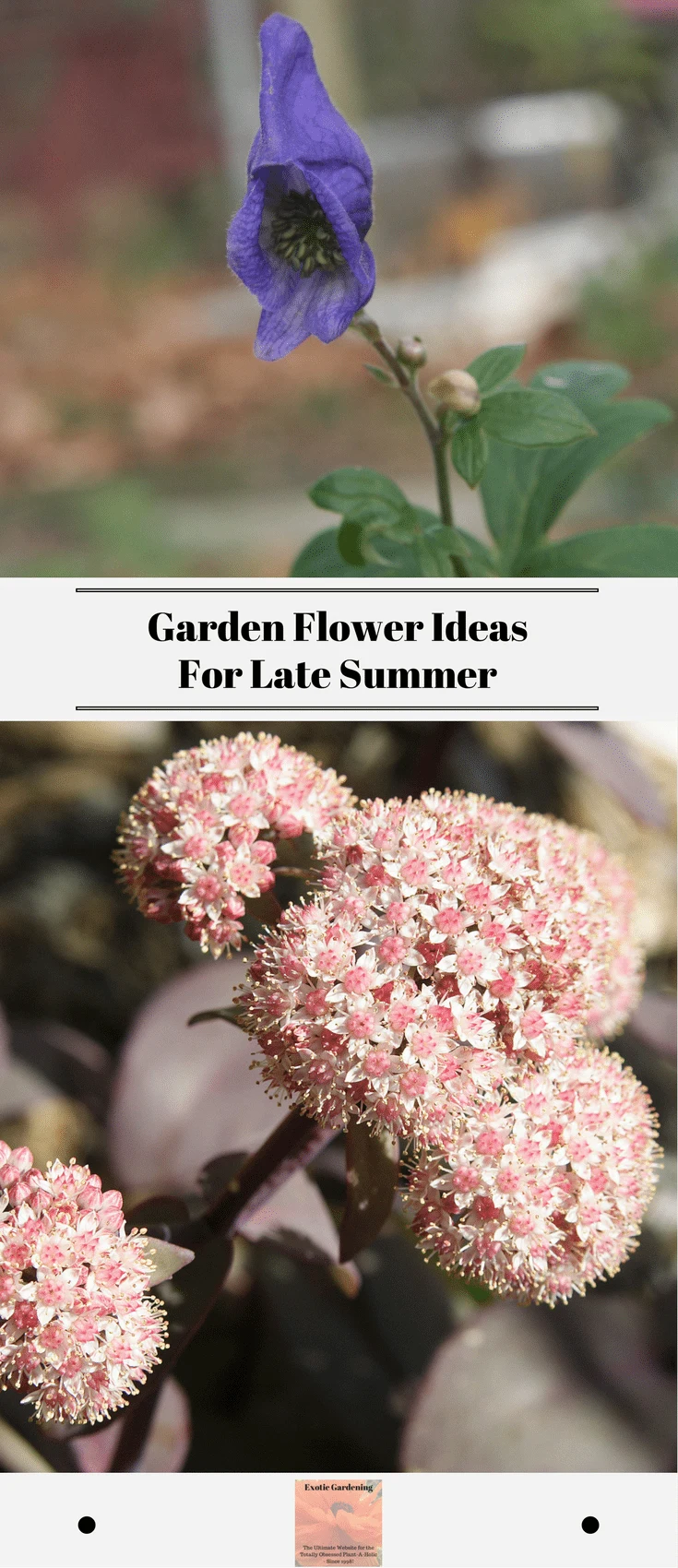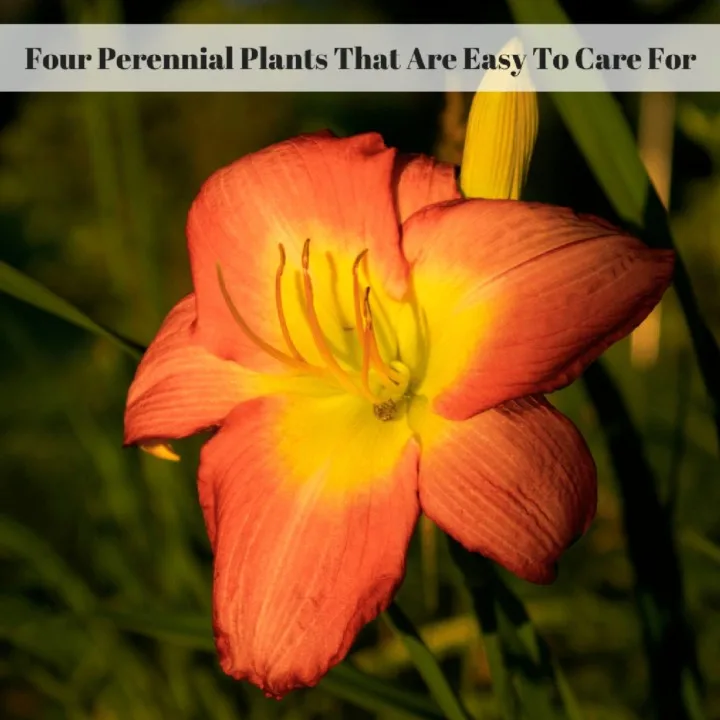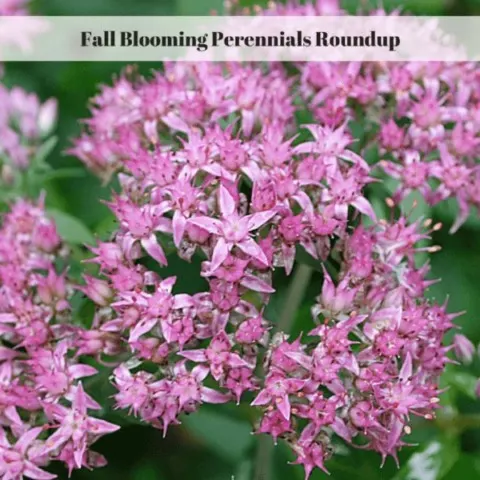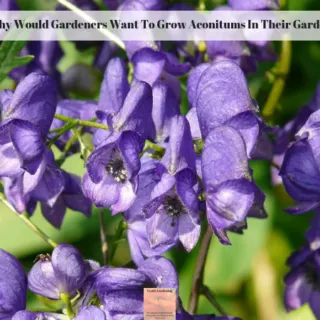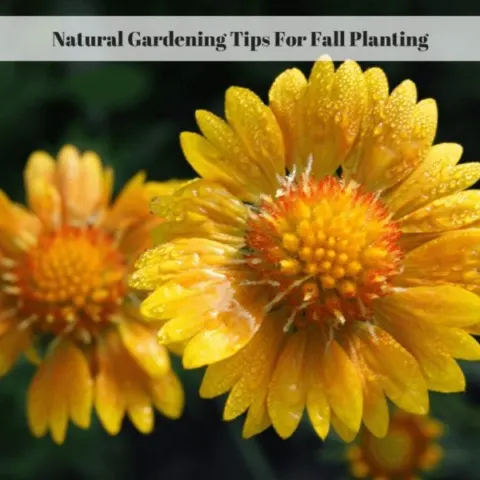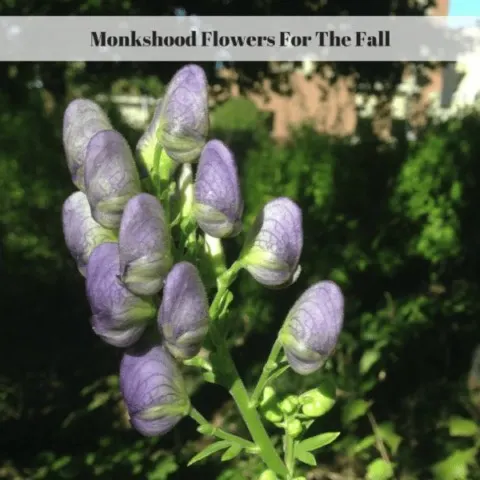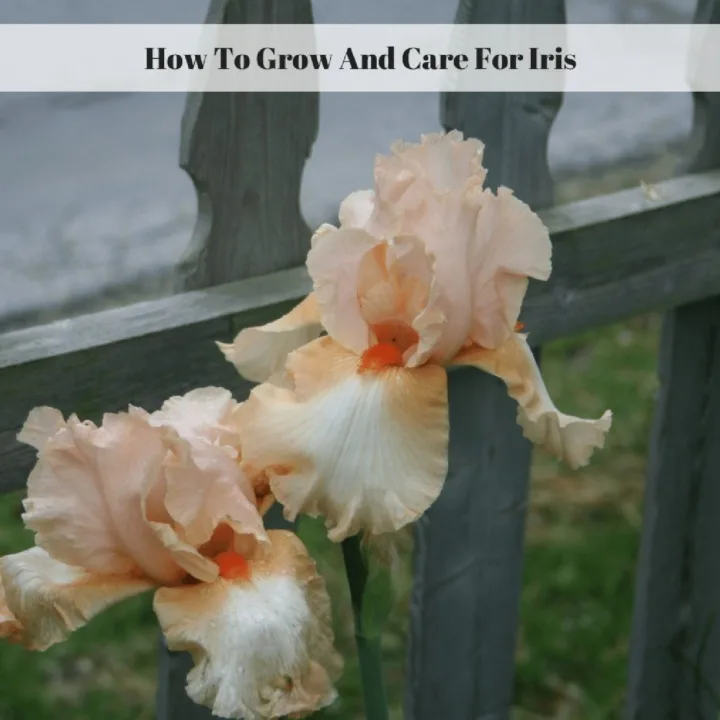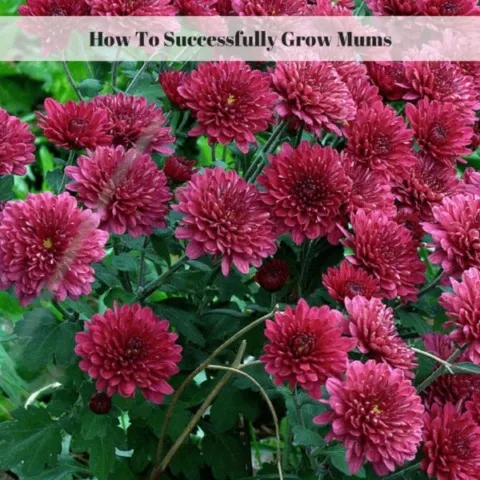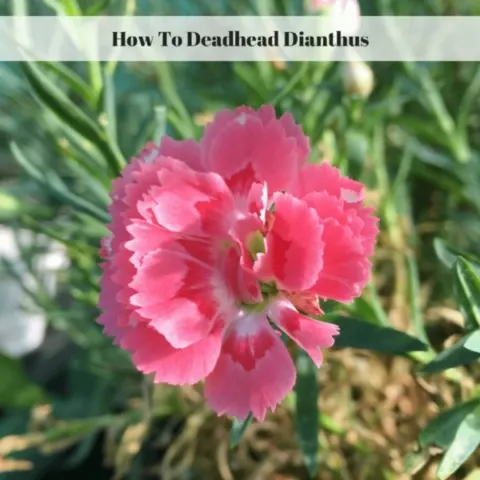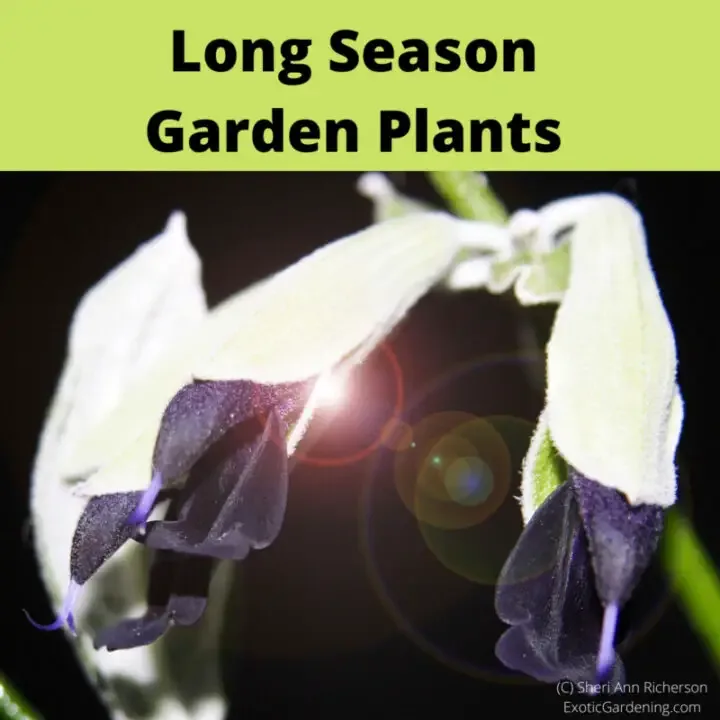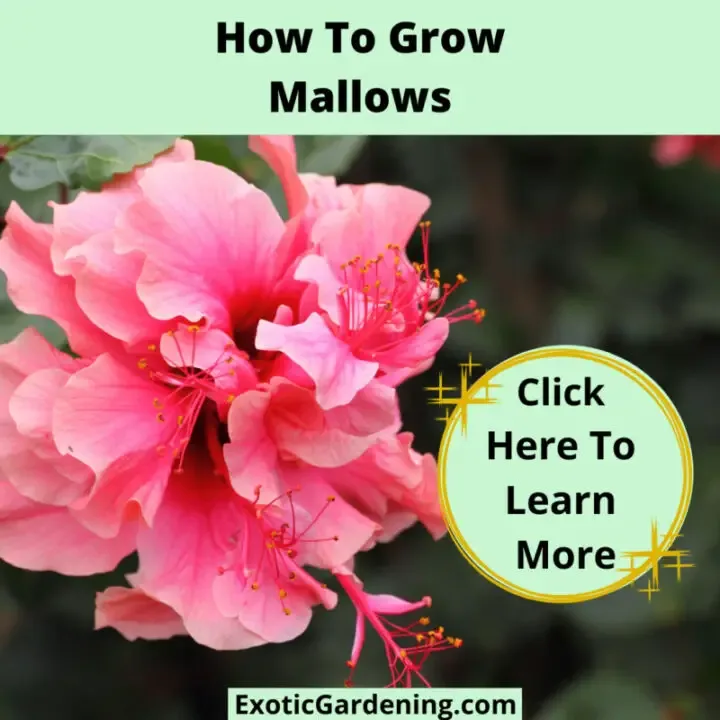These garden flower ideas make it easy to create a riot of color in the late summer garden.
The easiest way to do this is by growing perennials that burst into bloom towards the end of the gardening season.
In fact some of these plants will last into early winter depending on what your weather is like.
Here in Indiana, USDA Hardiness Zone ⅚, I have seen flowers in bloom year round outdoors.
Help The Pollinators While Adding Color To Your Garden
Many flowers that bloom in late summer offer migrating hummingbirds and butterflies a source of natural nectar that helps sustain them during their long flight home.
Most of these plants bloom right up to the first fall frost - some even bloom until the first hard frost of the season.
Choose varieties that start to bloom when your summer flowers are starting to fade to keep the color going strong and provide a source of much needed natural nectar.
Monkshood
Blue is not the only color the flowers come in. Some varieties have yellow or ivory flowers.
All parts of this plant are toxic so plant it near the center or rear of the flower border to avoid garden guests brushing against it.
Most varieties reach a mature height of 3 to 4 feet.
Grow monkshood in part-shade in well-drained, organic rich, moist soil.
Monkshood is hardy in USDA hardiness zones 3 through 8.
Turtlehead
The turtle-shaped pink, white or purple blooms are where this native plants gets its common name of turtlehead (Chelone).
It is a host plant for the endangered Baltimore checkerspot butterfly.
The flower stalks, which contain multiple small flowers, are ideal for cutting.
Grow turtlehead in full sun or part shade in moist soil. It is ideal for planting at the edge of a pond or stream.
The mature height ranges from 2 to 4 feet.
Turtlehead is hardy in U.S. Department of Agriculture hardiness zones 4 through 7.
Sedum
Sedum is a well-known late summer bloomer that thrives on neglect.
Sedum prefers to grow in well-drained soil slightly on the dry side.
Sedum is a succulent.
Soil that is too moist or too rich will cause this plant to flop over.
Eventually these conditions will kill the plant.
Grow sedum in full sun.
Sedum comes in a variety of heights from low-growing ground covers that are a mere 9 inches tall or upright varieties that reach a height of 3 feet.
Depending on variety, sedum is hardy in USDA hardiness zones 4 through 9.
Joe-Pye Weed
An ideal plant for naturalizing in moist sites in full sun, or near water, Joe-pye weed (Eupatorium) reaches a mature height of 5 to 7 feet.
Gardeners that do not have enough room for a large plant in their garden should look for the dwarf variety which reaches a mature height of 3 to 4 feet.
Joe-pye weed grown in other sites needs regular, deep watering in order to thrive.
The pale pink or purple flowers bloom from July through September.
Bees, butterflies and birds are attracted to the flowers.
Joe-pye weed is hardy in USDA hardiness zones 5 through 10.
Perennial Plants
Awesome Colorful Plant Combinations: Reliable Daylily And Geranium
If you're looking for a colorful, easy to care for perennial plant combination, try the daylily and geranium.
How To Successfully Grow Mums
Chrysanthemums, commonly referred to as mums are a beautiful fall blooming plant. Check out these tips to successfully grow mums!
Long Season Garden Plants
Long Season Garden Plants
How To Grow Mallows
Learn how to grow mallows, a Malvaceae family which includes some of the most popular plants for the home garden, Hibiscus.
Popular Plants For Miniature Gardens
There are a number of popular miniature plants that are ideal to use to create miniature gardens inside or outside your home or office.
Sweet Autumn Clematis: A Garden Treasure
Discover the enchantment of Sweet Autumn Clematis: rapid growth, fragrant blooms, and versatile garden beauty await!


